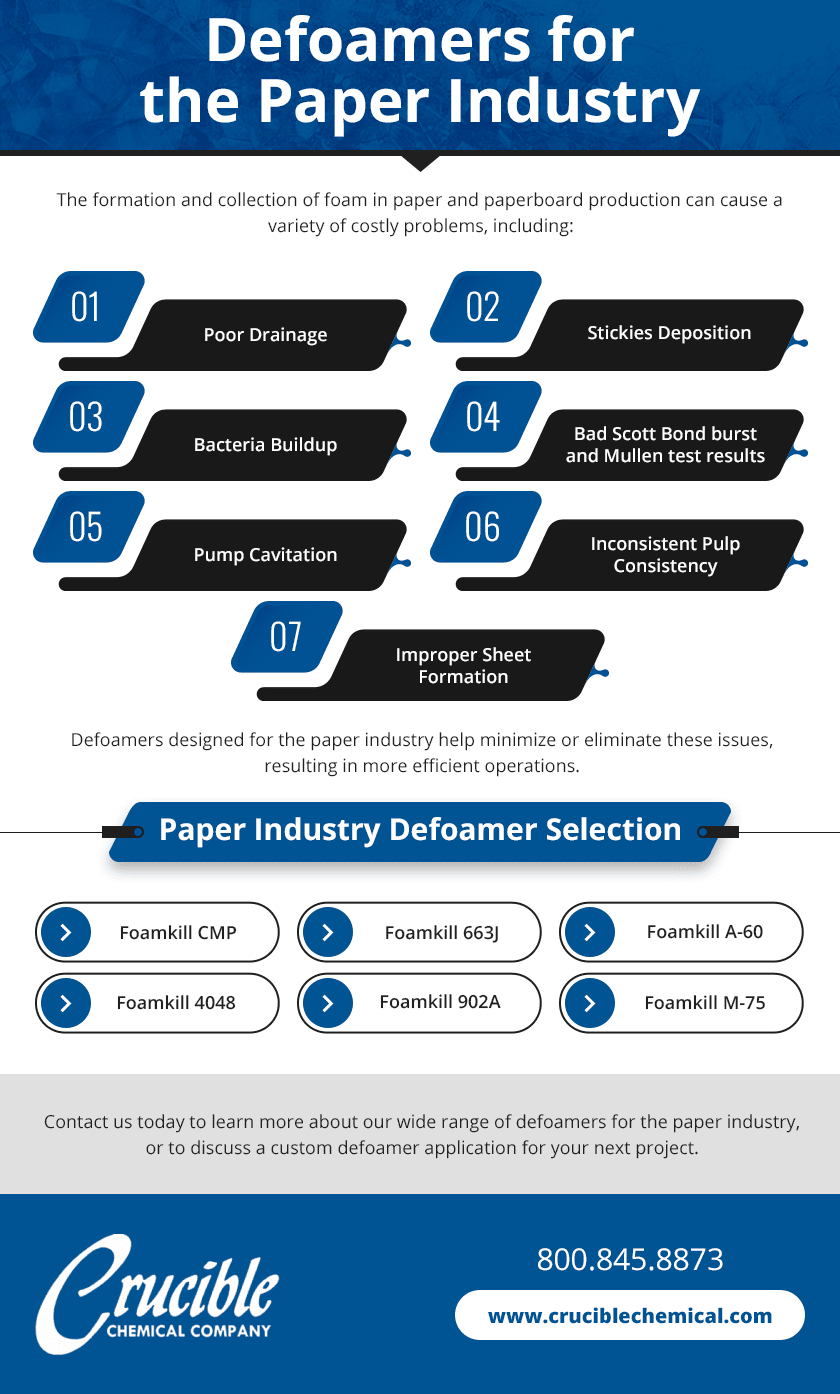Defoamers: Essential Tools for Enhancing Efficiency in Cleaning Products
Defoamers: Essential Tools for Enhancing Efficiency in Cleaning Products
Blog Article
Choosing the Right Defoamer for Your Specific Application Demands
Picking the suitable defoamer for particular application needs is a nuanced procedure that requires careful factor to consider of several factors, such as the foam tool, kind, and operating problems. Understanding the nuances of defoamer performance-- consisting of rate and persistence-- while likewise accounting for environmental and regulative aspects is crucial. Furthermore, taking part in trials and speaking with suppliers can offer beneficial insights. Browsing these intricacies can be daunting, and the repercussions of a bad choice may be significant. What techniques can be used to ensure an ideal selection?
Understanding Foam Development
Foam development happens when gas is trapped within a fluid, creating a secure structure of bubbles. This sensation can significantly influence various commercial procedures, specifically in industries such as food manufacturing, drugs, and wastewater therapy. The presence of foam can prevent blending, lower item quality, and even cause functional inefficiencies.
Foam generally forms due to a mix of elements, including surface-active agents, agitation, and the attributes of the liquid phase. Surfactants lower the surface area tension of the fluid, helping with the formation of bubbles that can integrate and maintain. Agitation, whether from mechanical mixing or gas intro, improves bubble development, resulting in boosted foam volume.
Recognizing the mechanics of foam formation is critical for industries intending to optimize their procedures. By determining the details conditions that promote foam generation, organizations can implement techniques to minimize its impacts.
Sorts Of Defoamers Available
Numerous types of defoamers are readily available to deal with the obstacles presented by foam in commercial applications. defoamers. Generally identified, defoamers drop right into 3 groups: silicone-based, non-silicone-based, and all-natural defoamers
Silicone-based defoamers are renowned for their performance and stability across a variety of temperature levels and pH degrees. They are normally made use of in applications where strong foam suppression is necessary, such as in coverings, paints, and adhesives. Their low surface stress permits rapid foam collapse.
Non-silicone-based defoamers, commonly made from natural compounds, provide a choice for applications sensitive to silicone deposits. These defoamers can be further separated into polyether and ester types, each tailored to meet particular solution needs. Non-silicone defoamers are frequently used in food processing and personal care items because of their compatibility with different formulas.
Natural defoamers, originated from plant or pet resources, are obtaining grip as a result of their eco-friendly profile. These items are specifically appealing in applications where governing conformity and sustainability are vital, such as in agrochemicals and biotechnology.
Picking the appropriate kind of defoamer is critical for optimizing performance and ensuring compatibility with details applications.
Trick Application Factors To Consider
When picking a defoamer, it is necessary to consider the specific application requirements to ensure optimal performance. defoamers. Different markets have unique requirements, such as food processing, drugs, or wastewater therapy, and each application might need distinct defoaming buildings
Secret aspects to examine include the tool in which the defoamer will certainly be utilized, whether it is water-based, oil-based, or a combination thereof. The temperature level and pH degrees of the application can likewise significantly affect the performance of my blog a defoamer. In addition, compatibility with other chemicals existing in the system is critical to stop unfavorable reactions that might jeopardize efficiency.
Another vital factor to consider is the foaming behavior of the certain system. Comprehending whether the foam forms swiftly or slowly can lead the choice of a defoamer that targets the source efficiently. The preferred rate of defoaming can affect the option, as some applications call for fast activity while others may endure slower defoaming processes.
Last but not least, environmental and governing considerations should not be neglected, particularly in sectors with strict conformity demands. Choosing a defoamer that aligns with these aspects guarantees both performance and safety in the application.

Efficiency Screening Methods
Assessing the performance of a defoamer requires a systematic strategy to screening that precisely determines its effectiveness in specific applications. Numerous efficiency testing methods can be utilized to ascertain the optimum defoamer for an offered formula.
One typical method is the bubble examination, which examines the defoamer's capability to reduce foam quantity gradually. This test involves creating a steady foam and then including the defoamer to observe the price of foam collapse. One more method is the vibrant foam test, where foam is generated under regulated problems to mimic real-world application scenarios. This strategy gives insights into just how the defoamer carries out under differing shear problems.

Eventually, choosing the proper efficiency screening approach relies on the details application and the type of foam being dealt with. Each technique uses useful information that can lead solution changes and improve the efficiency of the defoamer in functional applications.
Best Practices for Selection


Following, think about the defoamer's performance in terms of speed of activity and perseverance. A quick-acting defoamer may be needed for processes where fast foam suppression is critical, while a more consistent solution might be required Learn More Here for long term foam control. In addition, examine the environmental influence of the defoamer, including its biodegradability and any kind of regulative compliance requirements.
Conduct trials with picked defoamers to identify their performance in real-world problems. By adhering to these ideal methods, you can these details enhance foam control performance and guarantee the long life of your processes.
Verdict
In summary, choosing the suitable defoamer demands a detailed evaluation of numerous aspects, including foam kind, medium, operating problems, and environmental considerations. Comprehending the unique qualities of foam development and the readily available defoamer options is important.
Choosing the proper defoamer for certain application requirements is a nuanced procedure that demands cautious consideration of numerous variables, such as the foam kind, operating, and tool conditions.Picking the right defoamer is essential for attaining ideal efficiency in foam control applications. A quick-acting defoamer may be required for processes where quick foam suppression is essential, while an extra consistent formula may be needed for extended foam control.In recap, picking the ideal defoamer requires a comprehensive examination of various elements, consisting of foam kind, medium, operating problems, and ecological considerations. Understanding the unique qualities of foam formation and the available defoamer alternatives is vital.
Report this page